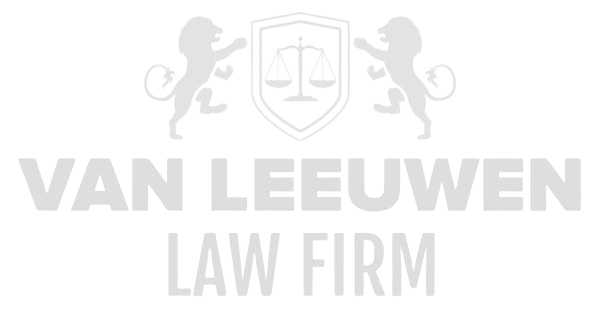Market manipulation constitutes one of the most persistent and damaging threats to the integrity of our financial markets. It is a practice that fundamentally undermines the principles of a fair and transparent marketplace by deliberately and consciously distorting the appearance of supply and demand. Through the manipulation of prices, trading volumes, and the dissemination of misleading information, a false impression is created that misleads investors and other market participants, with the ultimate aim of securing improper financial gain. This phenomenon extends beyond mere financial harm to individual investors; it erodes the trust that underpins the entire financial system. Consequently, executives of financial institutions and publicly listed companies face a complex challenge: how to safeguard the integrity of the markets in which they operate and prevent their organizations—whether knowingly or unknowingly—from becoming involved in manipulative practices. Addressing this question requires a keen understanding of the diverse and ever-evolving forms of market manipulation, ranging from the spread of misleading market information to the orchestration of fictitious transactions, such as wash trades, which unlawfully disrupt market functioning.
The legal and regulatory frameworks surrounding market manipulation are extremely strict and complex, with regulators endowed with broad investigative powers and sanctioning authority to intervene. It is essential that executives do not merely act reactively but proactively establish robust governance and compliance structures that enable the detection and prevention of manipulation. This calls for the implementation of advanced monitoring and analytical tools, but equally important is cultivating a corporate culture in which integrity and transparency are the norm and employees are encouraged and protected when reporting suspicious activities. Combating market manipulation is not only a legal obligation but also forms the foundation of socially responsible business conduct and the preservation of trust in financial markets—conditions indispensable for sustainable economic growth and stability. Furthermore, executives must anticipate technological innovations such as high-frequency trading and algorithmic trading, which present new opportunities for manipulation and thus new risks, and respond with decisive measures to address these challenges.
Types of Market Manipulation
Market manipulation encompasses a broad spectrum of methods, each aimed at influencing market prices and trading volumes without these changes being based on fundamental economic factors. A common form is the so-called pump-and-dump strategy, where the price of a stock or security is artificially inflated by spreading misleading or exaggerated positive information. Once the price has reached an artificially high level, the securities are sold at this inflated value, after which the price collapses, causing significant losses for later buyers. Wash trades constitute another classic technique, involving the repeated buying and selling of the same securities between affiliated parties without taking on any real economic risk. These sham transactions create an illusion of increased trading activity and market demand, attracting other investors and influencing the price.
Spoofing and layering are more advanced forms of manipulation that often use automated trading algorithms. Spoofing involves placing false buy or sell orders with the intention of canceling them before execution, aiming to mislead other market participants about the true market demand. Layering works on a similar principle but by placing multiple layers of false orders at different price points. Both techniques manipulate the order book and create a false impression of market interest, thereby steering prices. Churning, another manipulation technique, involves excessive trading of securities within a portfolio, often without economic benefit, to generate trading costs that benefit the trader but harm the client or investor. These diverse practices illustrate the complexity and variety of market manipulation, with increasingly sophisticated techniques being developed to evade regulators.
The line between these different forms of manipulation and legitimate trading strategies is often subtle and requires in-depth analysis of trading data, participant behavior, and market conditions. For example, certain suspicious patterns may in fact be the result of market liquidity, legitimate arbitrage opportunities, or exceptional economic events. Therefore, it is essential that supervisory and enforcement agencies possess the appropriate knowledge, expertise, and technological resources to distinguish deliberate manipulation from normal market functioning. Detecting and combating these various forms of market manipulation requires a coordinated interplay of legal, economic, and technical expertise.
Legislation and Regulation
The approach to market manipulation is firmly embedded in a comprehensive regulatory framework manifested at both national and European levels. The Market Abuse Regulation (MAR), effective since 2016 within the European Union, serves as the central instrument. MAR is designed to prevent and combat market abuse by setting clear standards concerning insider trading and market manipulation. The regulation obliges market participants to transparency and imposes strict reporting and disclosure requirements. Moreover, MAR contains provisions prohibiting the dissemination of false or misleading information that could affect the market. In addition to MAR, numerous national laws and rules exist that often delve deeper into specific aspects of market abuse and sanctions.
Supervisory authorities such as the Netherlands Authority for the Financial Markets (AFM) and the United States Securities and Exchange Commission (SEC) play a central role in enforcing these rules. They are tasked with monitoring markets, analyzing trading data, and investigating suspicions of market manipulation. This requires extensive cooperation between various regulators, both within countries and internationally, since manipulative activities often cross borders and involve complex trading structures. Legislation and regulation are continuously adjusted to keep pace with technological developments and changing market conditions, ensuring that the tools remain adequate to counter market abuse.
Regulation is not only repressive but also contains preventive elements aimed at fostering a culture of integrity and transparency within financial institutions and among market participants. For example, MAR obliges financial institutions and companies to develop internal compliance programs to detect and prevent risky situations in a timely manner. Moreover, market parties are encouraged to engage in self-regulation and transparency to minimize unintended forms of market disruption. The interaction between legislation, supervision, and market practices forms a dynamic whole, continually striving for an optimal balance between market innovation and protection of the financial markets’ integrity.
Signals and Indicators
Identifying market manipulation starts with recognizing certain signals and indicators that deviate from normal market patterns. A key indicator is the occurrence of unusual trading volumes that do not correspond to the underlying economic reality of the relevant security. For example, sudden and unfounded spikes in the number of transactions may point to so-called wash trades or pump-and-dump schemes. Such anomalies often become visible through data analysis and by comparing current trading volumes with historical averages or benchmarks within the same sector or market segment.
Abnormal price movements also serve as strong signals. Rapid and sharp increases or decreases in a security’s price without any news, economic data, or broad market trends to justify them can indicate manipulative activity. The speed and pattern of price changes, such as sudden “spikes” or “gaps,” must always be critically analyzed, especially when accompanied by other suspicious indicators. Attention is also paid to unusual bid-ask spreads and order book behavior, where sudden surges of orders may point to spoofing or layering.
Besides volume and price, suspicious order patterns are crucial for detecting market manipulation. Placing and withdrawing large orders within a short time frame without intention to execute can indicate an attempt to create a false market. Such trading activity disrupts natural price formation and can lead to incorrect perceptions among other market participants. Modern surveillance systems utilize advanced algorithms to detect these patterns automatically, but interpretation still requires expert analysis to avoid false accusations. Signals and indicators thus form the starting point for in-depth investigations and enforcement actions.
Supervision and Enforcement
Supervision and enforcement are indispensable pillars in combating market manipulation. Regulators have a broad array of instruments to continuously monitor market behavior and timely identify signs of abuse. This starts with permanent surveillance of trading data, pattern analysis, and the deployment of advanced technologies such as machine learning and big data analytics. These tools help map complex transactions and structures that might otherwise go unnoticed. Supervision focuses not only on ex post tackling of violations but also on preventive measures designed to prevent market manipulation from arising in the first place.
Enforcement involves investigating suspicions of market manipulation and initiating legal proceedings against involved parties. This process is intensive and requires solid evidence that conclusively demonstrates intentional manipulation aimed at influencing market prices or trading volumes. Supervisors are granted investigative powers, including the ability to request documents, interview witnesses, and conduct forensic analyses of trading data. Outcomes may lead to administrative fines, coercive penalties, and in severe cases, criminal prosecution. Measures can also include restricting market access or imposing conduct bans.
The effectiveness of supervision and enforcement heavily depends on international cooperation and information sharing. Market manipulation increasingly occurs through cross-border transactions, often exceeding the jurisdiction of individual regulators. Cooperation between supervisors, judicial authorities, and other involved parties is crucial to dismantle manipulative networks and prevent recidivism. Furthermore, transparency towards the market and investors plays a role in strengthening confidence that markets are held fair and reliable. Supervision and enforcement are thus essential to ensuring orderly, honest, and efficient functioning of financial markets.
Insider Trading
Insider trading is a closely related yet distinct phenomenon within the broader framework of market manipulation. It involves trading securities based on non-public, price-sensitive information obtained from a position of trust within a company or organization. This information provides an unfair advantage to the trader because other market participants do not have access to the same knowledge. This undermines the principle of equal information disclosure, a fundamental tenet for transparent and fair markets. Although insider trading is technically a separate category, it falls under the broader definition of market abuse and is often addressed alongside market manipulation in laws and regulations.
The distinction between insider trading and other forms of market manipulation mainly lies in the nature of the abuse: insider trading is based on the possession of confidential information that underpins the trade, whereas market manipulation typically involves actively influencing the market price through trading behavior or information dissemination. However, overlapping situations exist, for example, when insiders not only trade based on inside information but also deliberately release misleading information to influence the market. In such cases, the legal framework becomes more complex and requires extensive evidence demonstrating the link between information, trading, and market effects.
Combating insider trading requires stringent supervision and robust enforcement practices. Detecting insider trading is challenging, as it often involves covert communication channels and hidden transactions. Legal procedures in insider trading allegations are intensive and revolve around proving the conscious possession of and trading on price-sensitive information. Authorities therefore place great emphasis on prevention through compliance programs, insider reporting obligations, and fostering a culture of integrity within companies. Preventing insider trading also safeguards market integrity and strengthens investor confidence.
Technological Monitoring
Technological advances in financial markets have created both new opportunities and challenges in market supervision and the fight against market manipulation. With the massive increase in automated and algorithmic trading, where transactions occur in fractions of a second, it has become indispensable for regulators to use advanced technological tools. Monitoring based on data analytics, artificial intelligence (AI), and machine learning enables the real-time analysis of large volumes of trading data and recognition of patterns indicative of manipulative behavior. These technologies offer far more precise and faster detection capabilities than traditional methods.
Using algorithms for surveillance also means that increasingly complex forms of market manipulation can be detected, such as order book manipulation through spoofing or layering, which are hardly perceptible to human supervisors. These systems can automatically flag anomalies and deviations for further investigation, significantly enhancing supervisory effectiveness. At the same time, rapid technological evolution imposes new demands on regulators: it requires ongoing training and system adaptation to keep pace with increasingly sophisticated trading strategies that may facilitate market manipulation.
However, these technological tools also bring legal and ethical challenges. Collecting, analyzing, and using trading data must be done carefully within the frameworks of privacy and data protection laws. Additionally, supervision using technology must remain transparent and proportionate to prevent wrongful suspicions and undue burdens on market participants. The future of supervision lies in an optimal combination of human expertise and technological innovation, enabling more effective and efficient combatting of market manipulation without undermining market trust.
Burden of Proof and Legal Procedures
Proving market manipulation is one of the greatest challenges in regulatory enforcement. Market manipulation often hides behind complex trading structures, automated transactions, and sometimes cryptic communication, making it difficult to provide irrefutable evidence that a market participant deliberately sought to influence the market. The burden of proof lies with the regulator or prosecutor, who must demonstrate intentional conduct aimed at manipulating market prices or trading volumes. This requires thorough analysis of trading data, the intentions of involved parties, and the causal link between trading activities and price effects.
Legal procedures related to market manipulation demand a multidisciplinary approach. In addition to legal knowledge, deep financial and technical expertise is necessary to understand and reconstruct complex transactions. Experts analyze order books, trading history, communications, and sometimes even internal corporate documents to establish manipulation patterns. Often, it is necessary to combine different types of evidence — both direct and indirect — to convince the court. These procedures are often time-consuming and require careful preparation, as the stakes and amounts involved in market manipulation cases are usually substantial.
Legal nuances also play a major role. Trading must be assessed within context, considering legitimate trading strategies that may sometimes resemble manipulative behavior. The degree of awareness and intent of the accused is also scrutinized, which is often decisive in case law. Prosecuting market manipulation therefore requires sharp legal insight, thorough examination of facts and circumstances, and the ability to clearly present complex matters. Only with this combination can justice be served for both protecting market integrity and safeguarding the rights of suspects.
Criminal and Civil Sanctions
Sanctions for market manipulation are severe and multifaceted, encompassing both criminal and civil measures. Criminal penalties include imprisonment and hefty fines, intended not only to punish but also to deter. In many jurisdictions, market manipulation and insider trading are regarded as serious offenses, where the involvement of a culpable party, deliberate rule violations, and damage to market integrity are heavily weighed. Imposing criminal sanctions requires convincing evidence and is often viewed as the ultimate enforcement step.
Besides criminal prosecution, civil sanctions may be imposed, such as fines by regulators, administrative penalties, and other regulatory measures. These civil sanctions provide regulators with a relatively quick and effective means to address market abuse without the need for full criminal proceedings. Injured parties can also seek civil damages, adding an additional enforcement dimension and recognizing victims’ interests. Administrative sanctions may include further measures such as license revocations or trading restrictions.
The combination of criminal and civil sanctions forms a powerful toolkit to discourage and punish market manipulation. Effective enforcement and appropriate sanctions are essential to restore and maintain trust in financial markets. The high threat of criminal penalties and risk of significant civil claims incentivize market participants to comply with rules and trade transparently. Ultimately, this contributes to a healthy and reliable market where capital can be allocated efficiently and investors are protected against unlawful practices.
Impact on Market Integrity and Investor Confidence
The impact of market manipulation goes far beyond the direct financial harm to individual investors; it strikes at the core of what makes financial markets sustainable and functional: market integrity and investor confidence. Market integrity refers to the fairness, transparency, and efficiency of market processes, where every participant has equal opportunities and market prices are determined based on genuine supply and demand. When market manipulation occurs on a large scale, this fundamental basis is severely undermined. The opaque and unlawful influence on prices causes market prices to no longer reliably reflect economic reality, negatively affecting the allocation of capital.
Investor confidence is closely linked to the perception that the market operates fairly and justly. When rumors, false information, or manipulative trading practices dominate market sentiment, investors lose trust in the system’s integrity. This can lead to decreased participation in financial markets, increased volatility, and ultimately, capital withdrawal. A market without trust experiences lower liquidity, higher transaction costs, and an increased risk of systemic crises. This makes it all the more urgent that market manipulation is effectively combated to safeguard market stability.
Moreover, the loss of market integrity has far-reaching consequences for the broader economy. Financial markets play a crucial role in allocating capital to businesses and projects that stimulate economic growth. When market prices are distorted by manipulative practices, investment decisions are based on incorrect signals, leading to inefficient capital allocation. This harms not only individual investors but also companies and society as a whole. Therefore, restoring and maintaining market integrity is not only a legal requirement but also an economic necessity.
International Cooperation
The cross-border nature of financial markets makes international cooperation between regulators and law enforcement indispensable in combating market manipulation. Effective enforcement often encounters practical and legal barriers when market abuse occurs across multiple jurisdictions. Data, evidence, and suspects may be located in different countries, making coordination and information sharing crucial to detecting and prosecuting criminal acts. International cooperation helps prevent fragmented approaches and enables a coherent and powerful response.
Multilateral initiatives, such as the International Organization of Securities Commissions (IOSCO), play a central role in promoting standards and facilitating collaboration. By harmonizing regulations and developing joint supervision and enforcement strategies, the international community can act more effectively against market manipulation. In addition, bilateral agreements and memoranda of understanding support rapid communication and cooperation between regulators and law enforcement agencies. This is essential to enable swift interventions and to prevent perpetrators from hiding behind jurisdictional boundaries.
The challenge remains to strike a balance between national sovereignty and the need for international cooperation. Legal differences, varying enforcement powers, and divergent priorities can pose obstacles. Nevertheless, it is in the interest of all countries to act jointly against market manipulation, given the severe consequences for global financial stability and economic growth. International cooperation not only strengthens enforcement but also contributes to a global climate of transparency, fairness, and trust in the financial markets.








